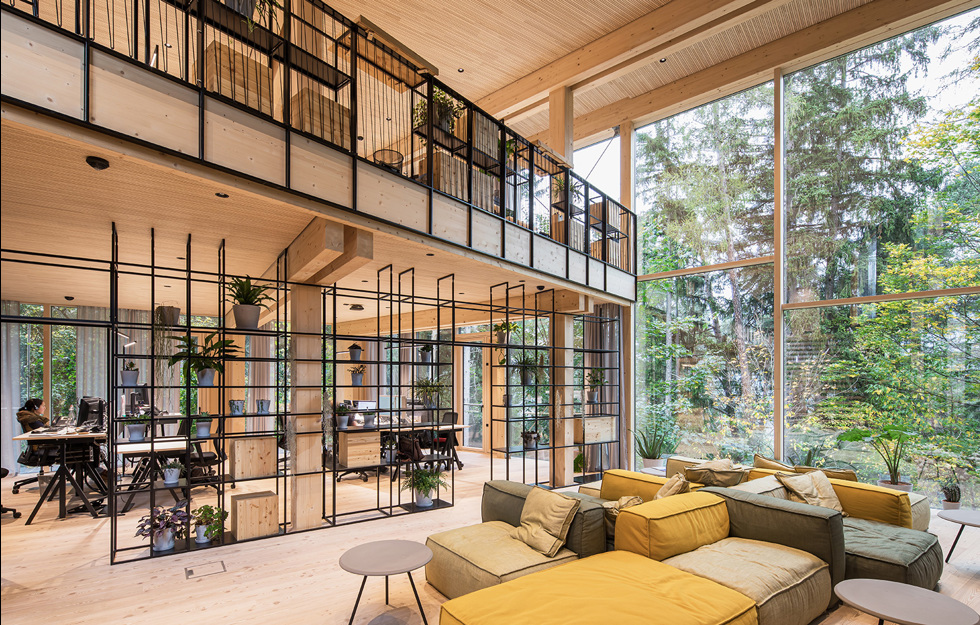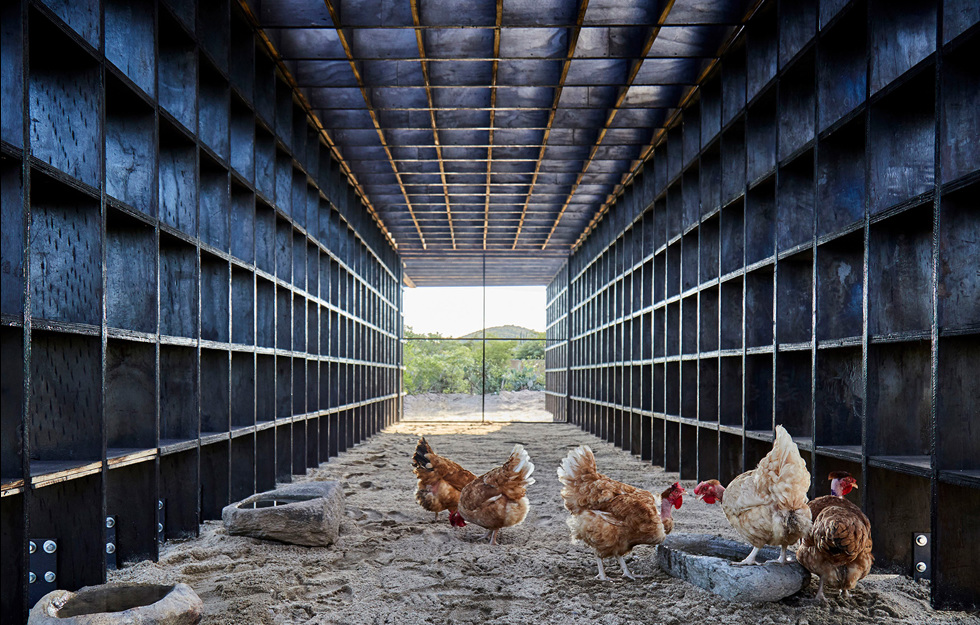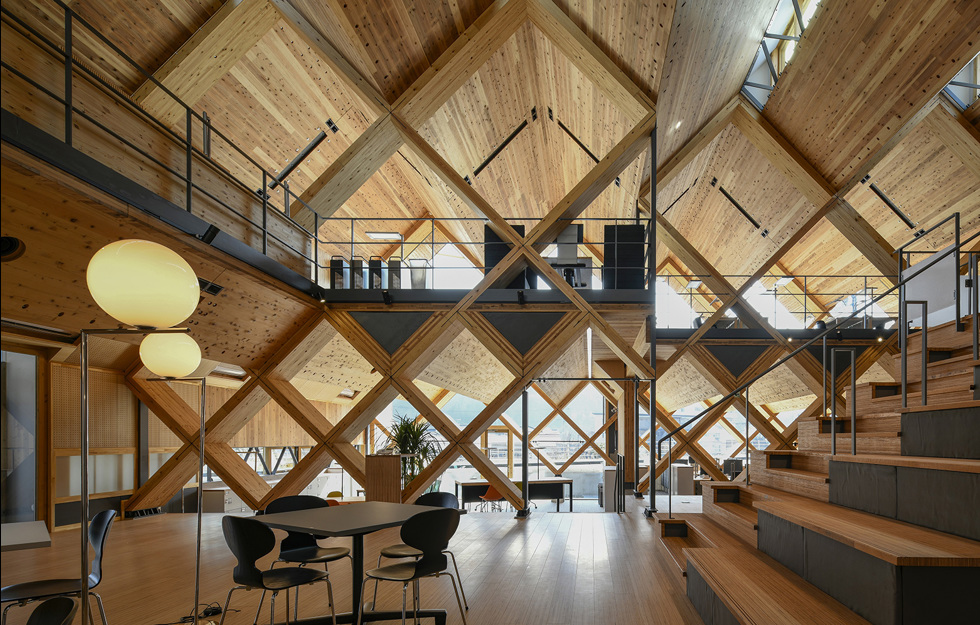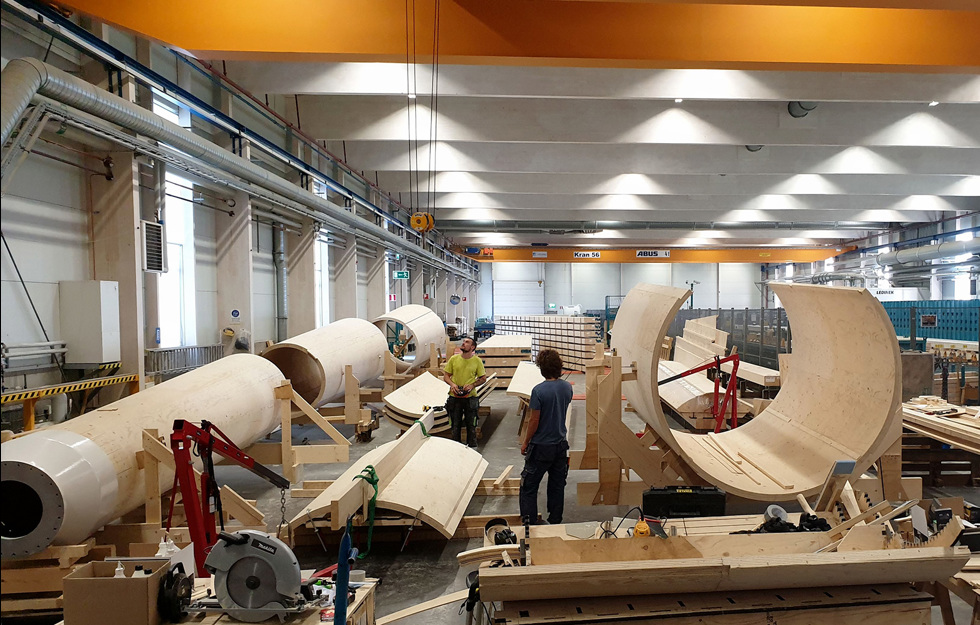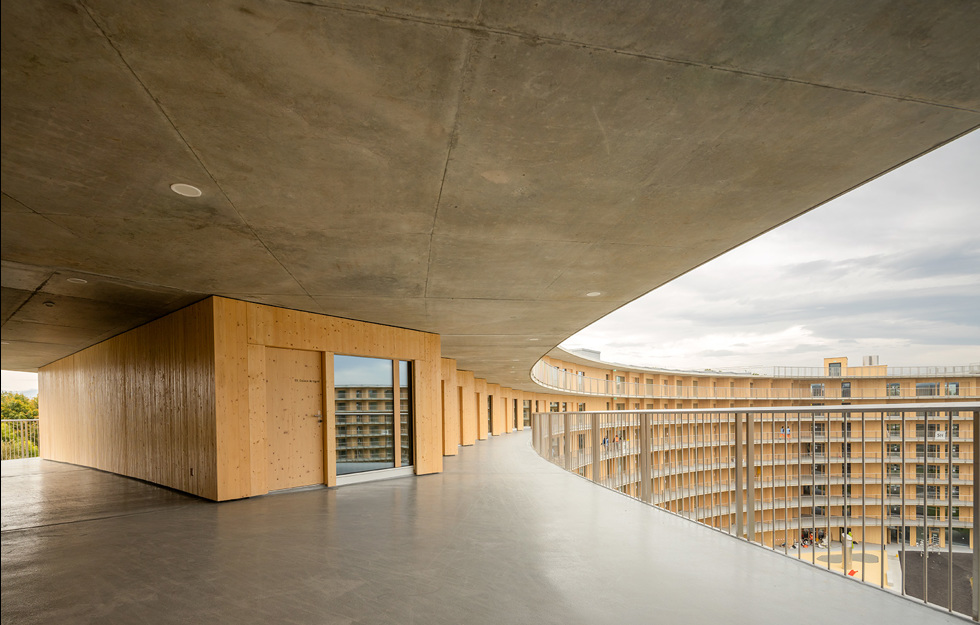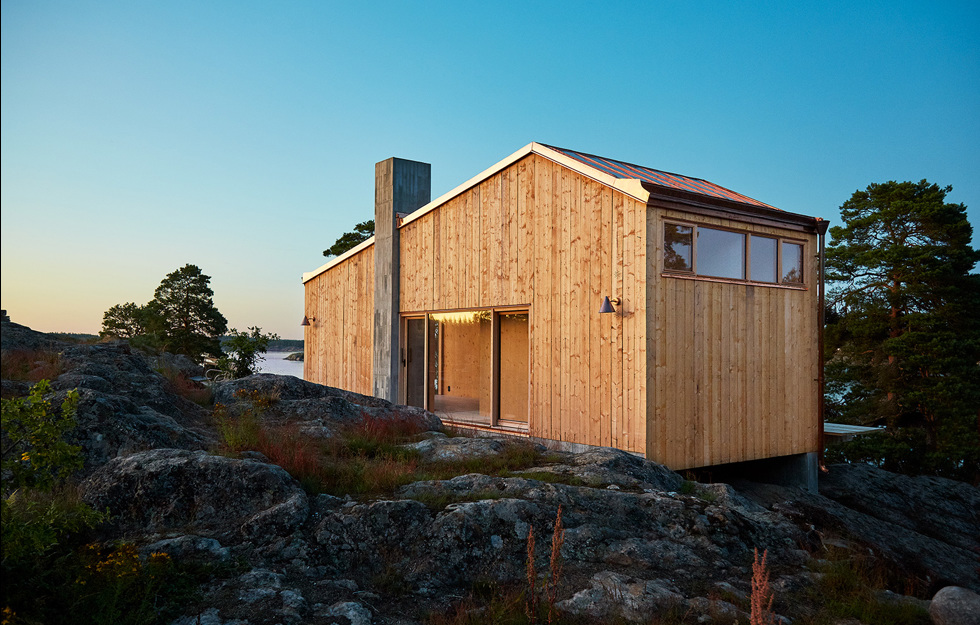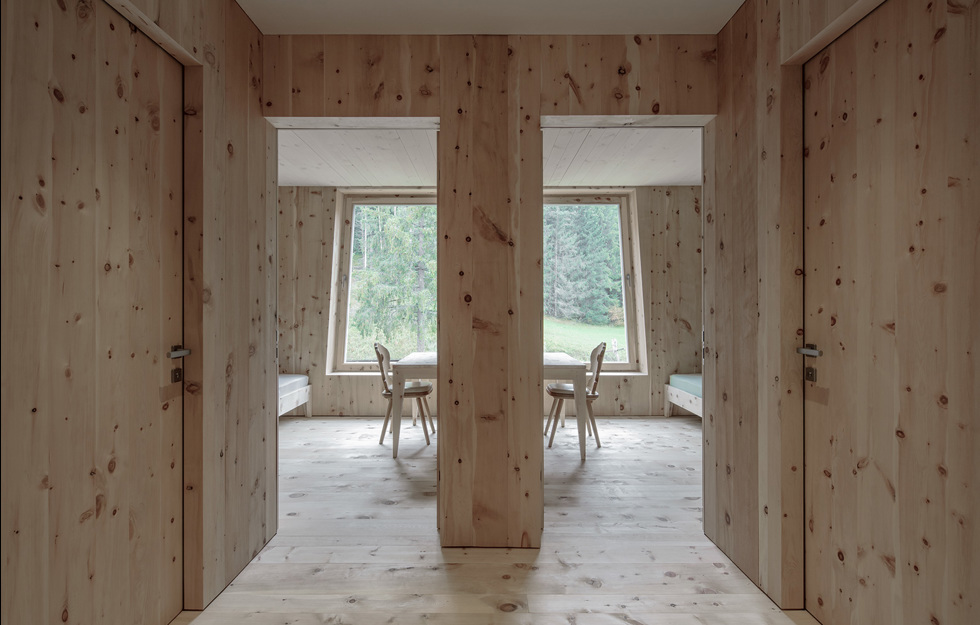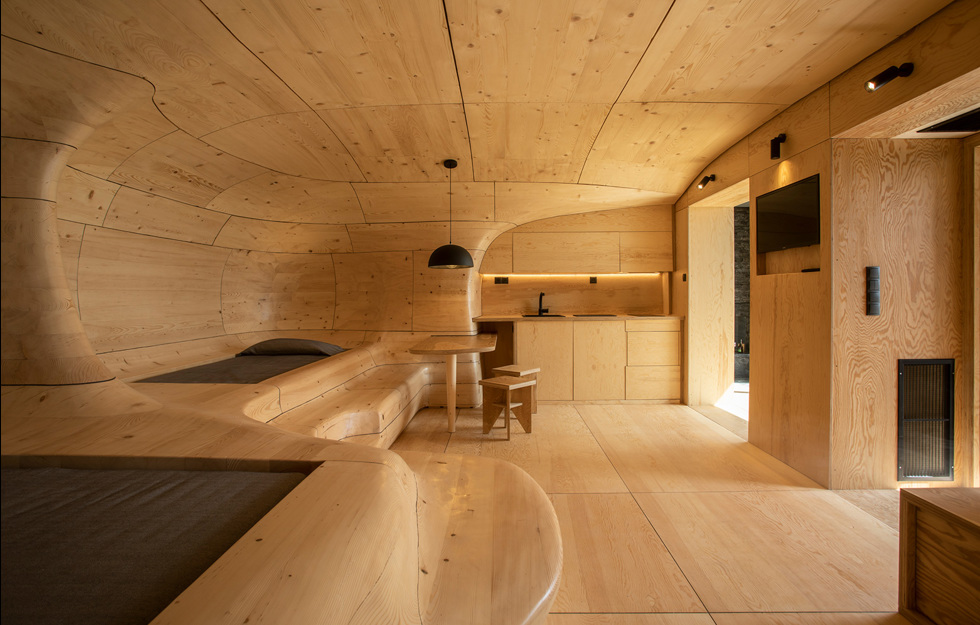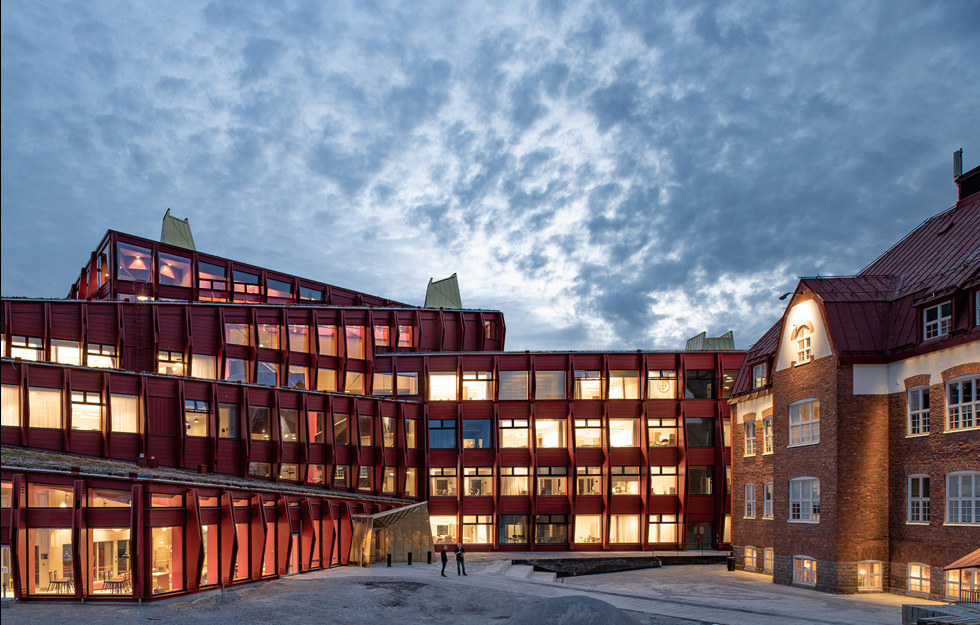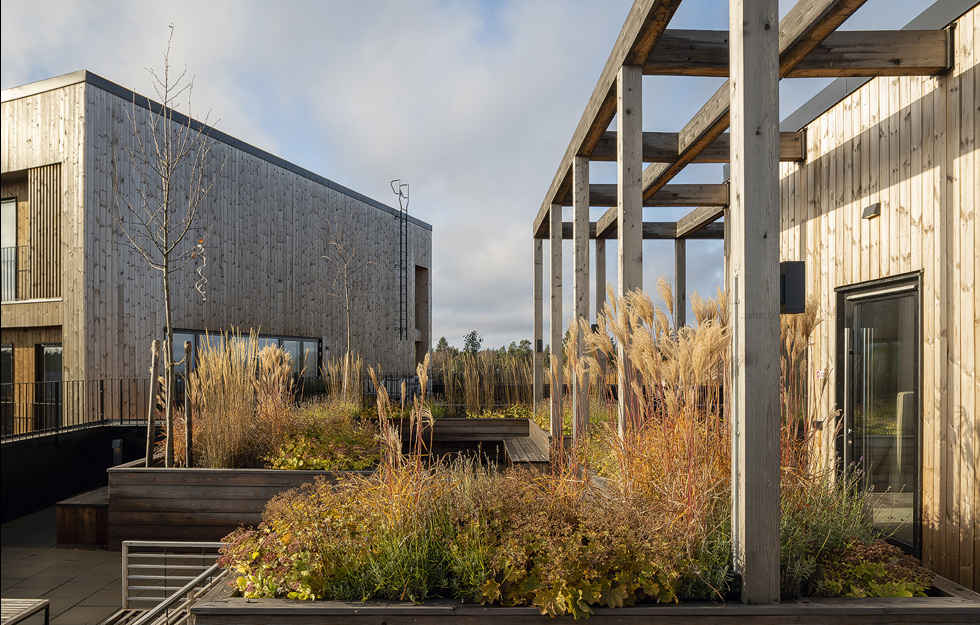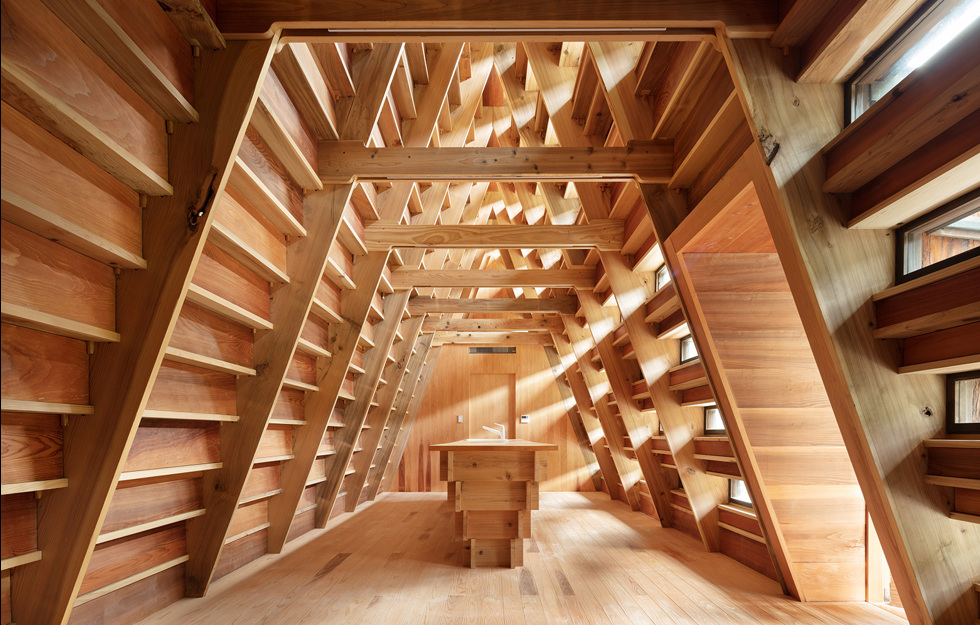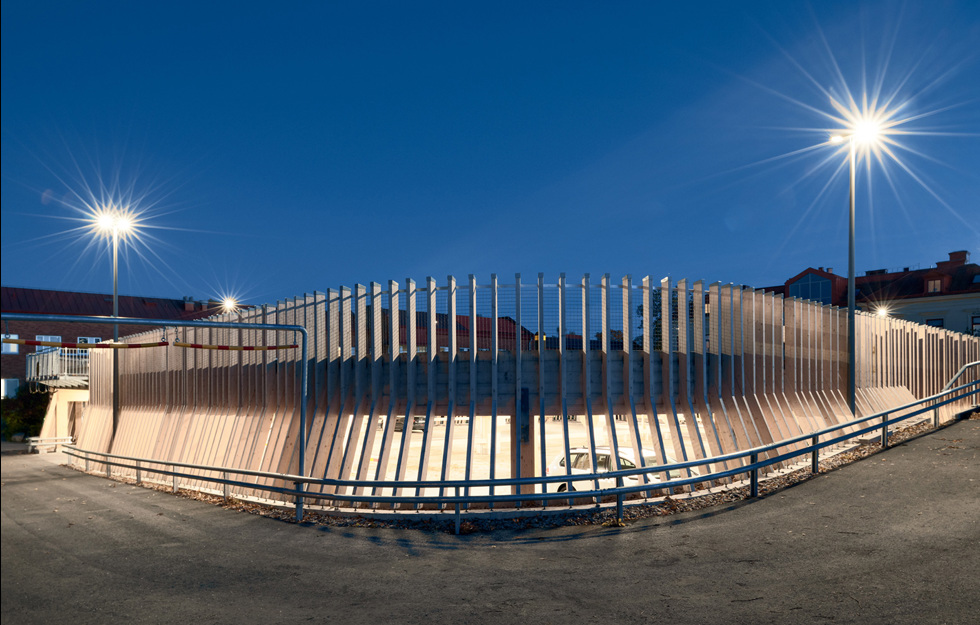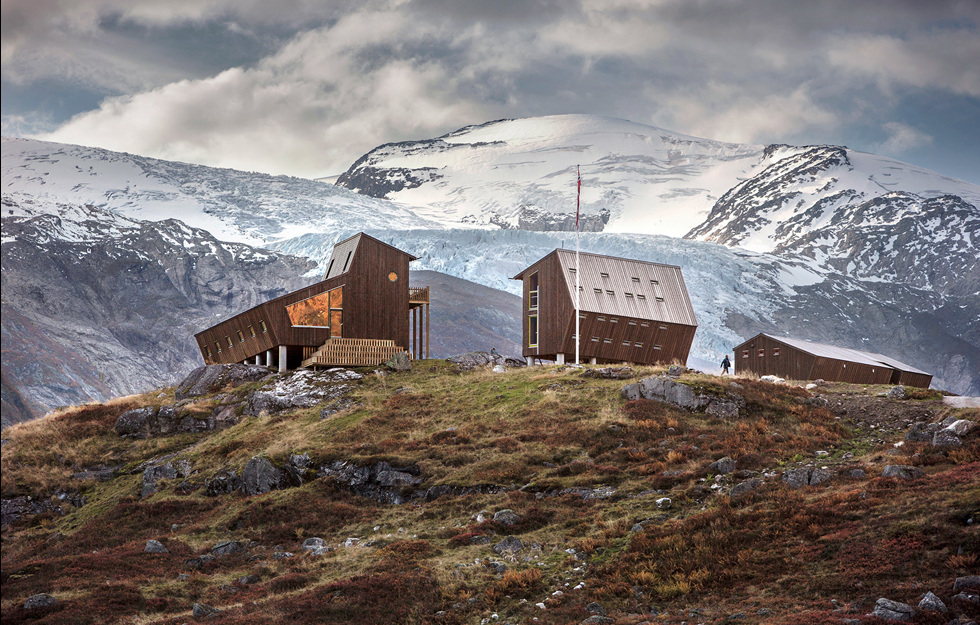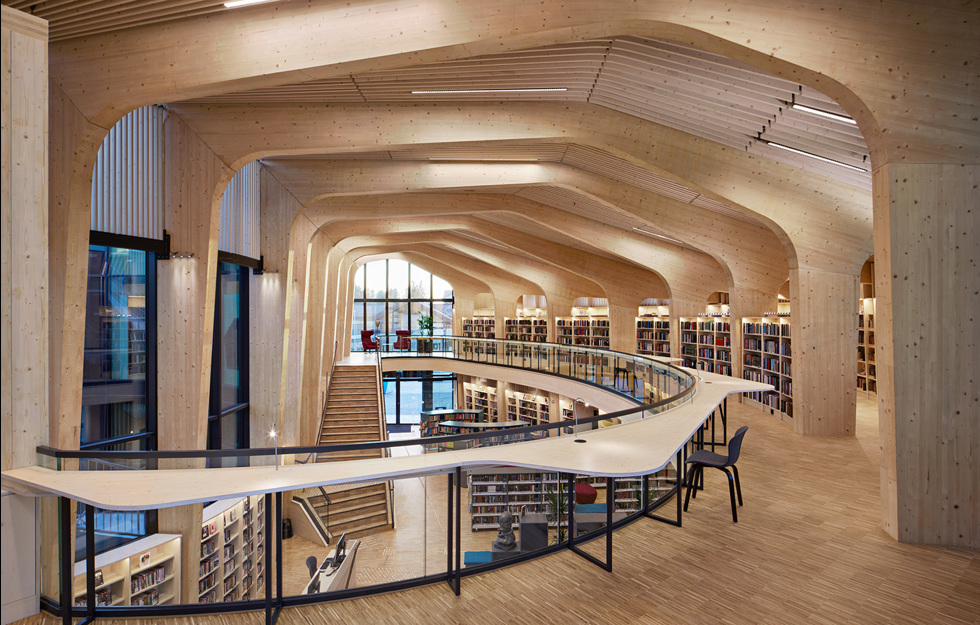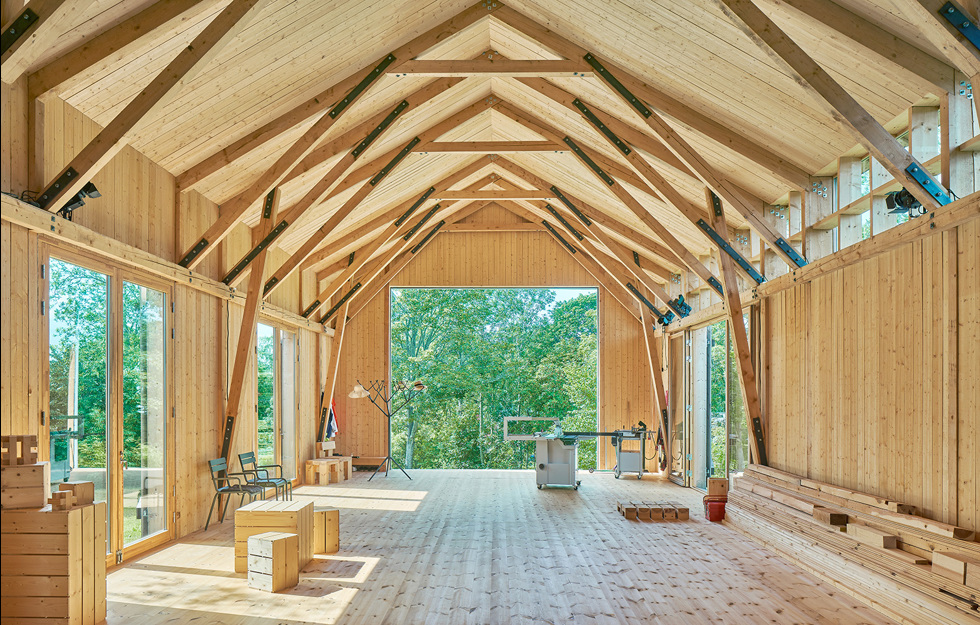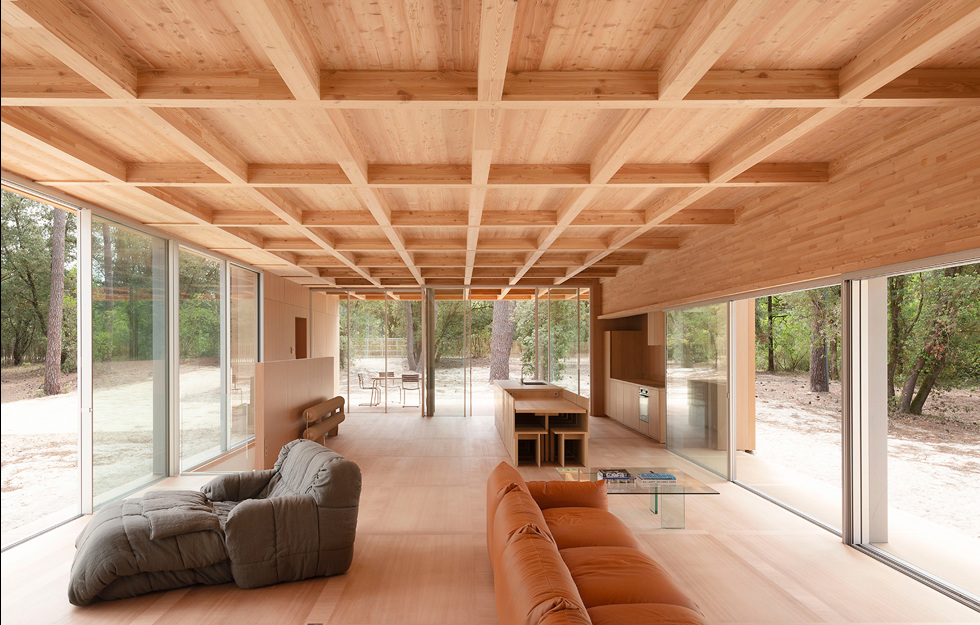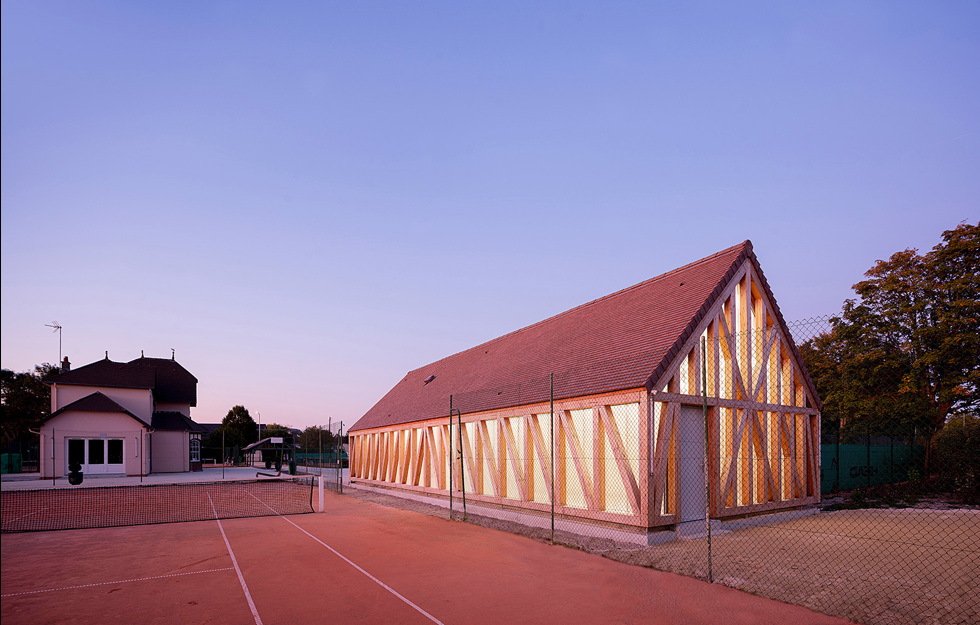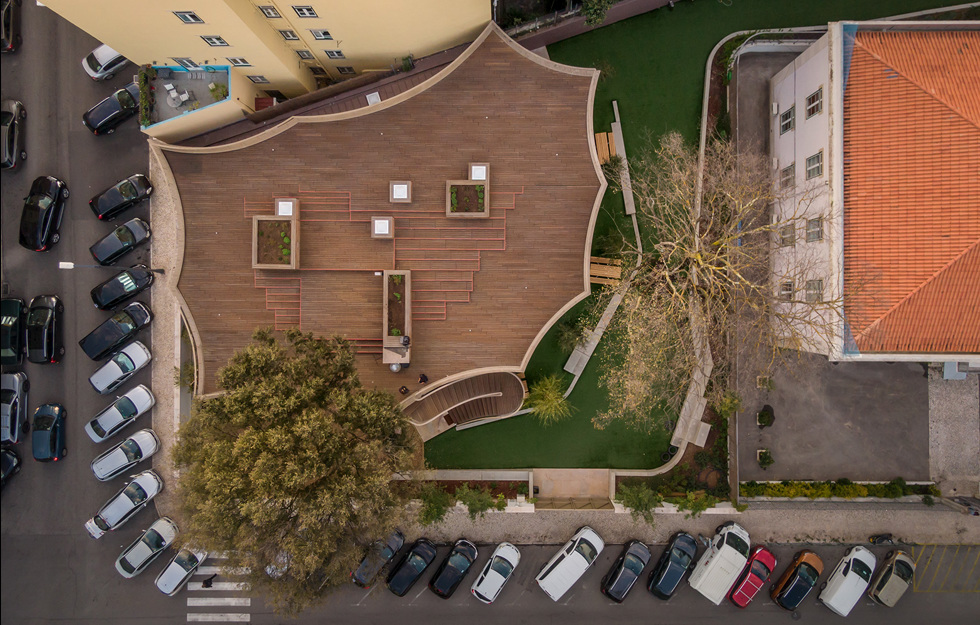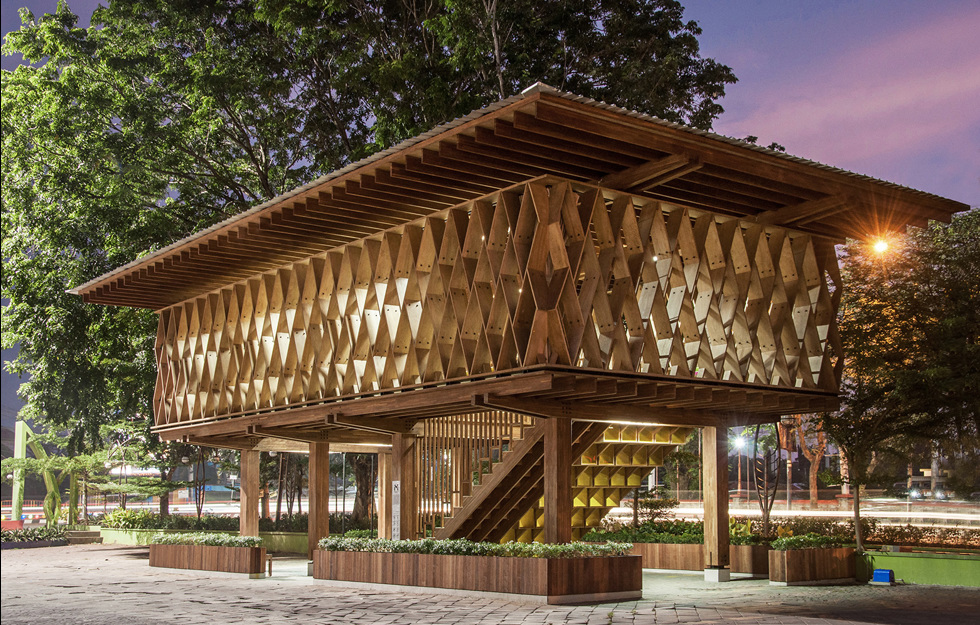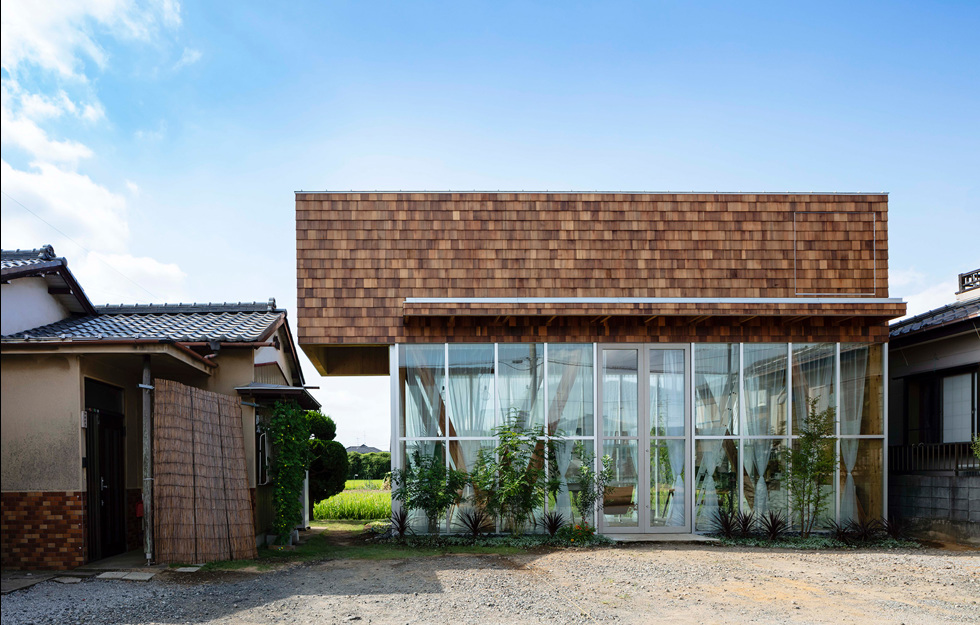The expansive Bois de Vincennes, a public park in the east of Paris, is home to both an arboretum (trees planted for the purposes of study) and a botanical garden. But it is also the site of the new headquarters for the French public health agency Santé Publique France. The architectural practice Atelier du Pont is responsible for a design that embraces the tree-filled location inside and out – and building in wood was a given.
“The new office block is an extension of an existing wooden building from 2012, so it was only natural to continue with the same material. The building is located amongst the woodland of the Bois de Vincennes and merges perfectly into its surroundings. Using wood also enabled us to optimise the construction phase and reduce the impact on the beautiful site, which remained in use,” says Anne-Cécile Comar, founding partner and architect at Atelier du Pont.
The fact that wood also stores carbon dioxide and has a low climate footprint was another reason for choosing it. Woods of various kinds – larch, spruce, oak and chestnut – run throughout the building as a common thread in everything from the façade, inwards to the structural frame and down to the level of the furniture. The initial assignment was to design just the building, but that soon expanded. Atelier du Pont was ultimately tasked with creating a complete workplace for the agency, a challenge that the firm was happy to take on.
“After a couple of months together, the client decided to commission us to design the interior as well. This doubled the challenge, but it also felt like a major vote of confidence.”
Anne-Cécile explains that they always strive to use the right material in the right place. Few buildings can match the ability of this office block to merge so well into its surroundings. The façade demonstrates a perfect balance of beauty and function. Attractive, hand-cut larch shingles sit below the windows, and on the long sides roughly hewn planks line almost the entire elevation, rising vertically like tree trunks.
“Larch is a lovely wood to work with, and the heartwood offers good durability and weather resistance. We also chose to keep the planks a little uneven to create a sense of a lumberjack’s cabin, reflecting the location in the Bois de Vincennes. The planks have been left untreated and we even kept on the bark.”
However, the vertical planks are not just an aesthetic feature, but also a sunscreening solution that in French is called a brise-soleil. The biggest challenge was finding larch trees that were long and straight enough. With their wide spacing around half a metre apart, they let in light without restricting the woodland views. Yet from a side angle they provide shade for the building. This regulates the indoor temperature without the need for air conditioning, so only one room in the whole building has it.
Projecting a metre beyond the outer edge of the planks, the eaves also help to shade the building and protect façade. The zinc-clad roof is able to be so slim because the primary load-bearing structure uses sheets of CLT. From above, the building looks almost like a pile of sticks laid on the ground. The different parts shoot out in all directions and are meant to symbolise the way the agency works on public health and healthcare provision.
With its ambition to embrace the forest and wood in every which way, the project was soon named Woody. Behind the larch façade sits a glulam post and beam structure with CLT walls and floor structures, all in spruce. Mineral wool provides the insulation. The intermediate floor comprises CLT topped with site-cast concrete.
Inside the building, the communal spaces have been designed to encourage informal meetings. The cafe and the restaurant make use of wooden structures to create a mix of different seating for groups of various sizes, as well as smaller rooms within a room. The floors are partly solid oak and partly natural rubber, while the walls are lined with acoustic wood wool tiles in the project’s interior colour palette: muted pink, natural white and pigeon blue. Cork is used in lamps, and the staircases are made from CLT, glulam and concrete. The stairs are centrally located, generously proportioned and light to encourage employees to exercise instead of taking the lift. With large furnished outdoor terraces, they are also encouraged to sit and eat outside in the fresh air. The material used in this context is chestnut. All the wood used comes from forests with either FSC or PEFC certification, and the architects have made informed decisions about materials, adhesives and surface treatments.
“All the materials, not just the woods, have been chosen to be ecofriendly. The choices we’ve made also create a very refined and relaxed working environment that contributes to the overall atmosphere.”
With its strong focus on health, it was important for the agency to have a workplace that was as toxin-free as possible, but the people who work here are likely to also enjoy a calm and pleasant working environment thanks to the soft values and feel of the wood.
France may not have the same traditional love of wooden buildings as Sweden, but things are starting to move in a positive direction. Seeing a client like the public health agency opting to build in wood obviously has an impact. At the start of the year French President Emmanuel Macron also announced a policy that the nation’s publicly funded new buildings should be at least 50 percent wood or other organic material. This initiative is to be implemented by 2022. There is considerable interest in building in wood, and Anne-Cécile Comar is cautiously optimistic. She says that wood construction is raising its profile and the industry is becoming more structured. She has also noticed the winds of change blowing in the local authorities across France.
“In the previous election, several cities began to head in a green direction. We’re starting to see hints of change, and we’re waiting for the effects to feed through. We’re seeing fragments, and that’s very positive.”
text Ellinor Thunberg








